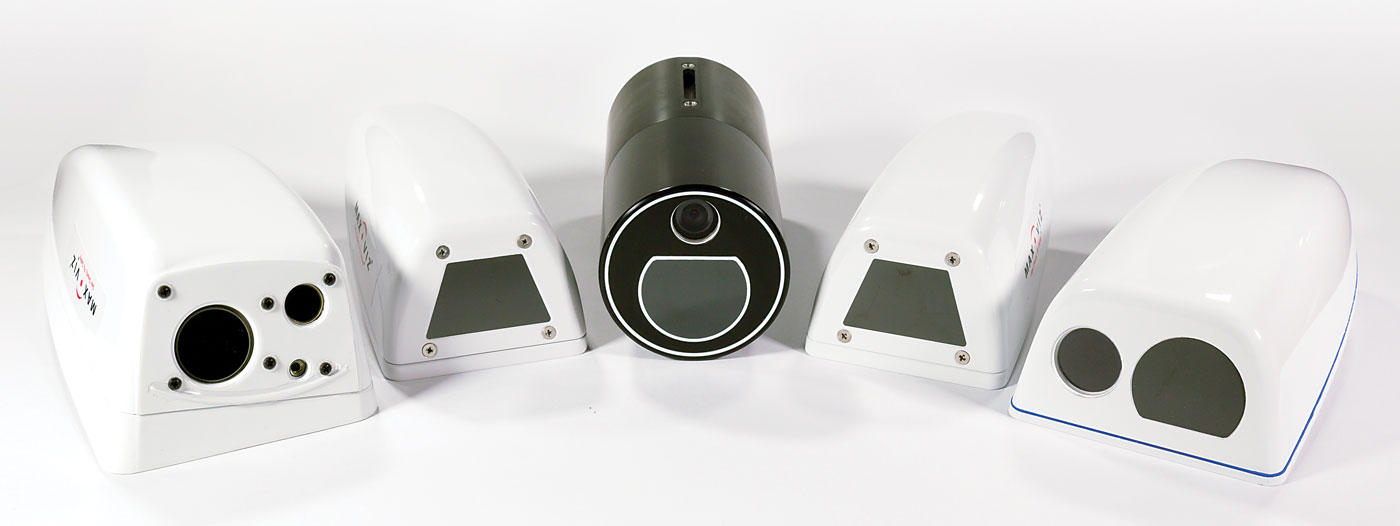Pilots have long sought ways to improve the way they see the world outside the cockpit. Astronics Max-Viz, a trailblazer in enhanced vision systems (EVS) for the world’s leading helicopter manufacturers, continues to advance the technology with the release of the Max-Viz 2400.
First introduced in 2001, the Astronics Max-Viz EVS employs infrared sensors, signal processing and advanced cockpit displays to show terrain, runways, taxiways, aircraft and obstacles in poor visibility conditions, including light fog, haze, smoke, smog, light precipitation and darkness.
With the Max-Viz 2400, Astronics Max-Viz has enhanced its dual-sensor EVS line. The product offers all the technological advancements of the Max-Viz 2300, including the ability to see the LED lighting used for heliports, taxiways and approach lights, and it is encased in an aerodynamic fairing, eliminating the need for a custom installation.
“We listened to our customers and developed the Max-Viz 2400 to address the need for a surface-mounted, high-resolution, dual-sensor system housed in its own fairing,” explained Geiger. “This reduces installation time and costs, and increases the mounting location options on the aircraft for maximum flexibility.”
The advancements to the Max-Viz 2400 come as the U.S. Federal Aviation Administration (FAA) continues to study the use of EVS for instrument approaches and landings at heliports. While EVS rules exist for approaches to runways at airports, comparable regulations for EVS have yet to be established for helicopters flying to onshore or offshore helipads at heliports.
As part of the study, which Geiger hopes will establish a basis for the possible application of EVS rules, the FAA is conducting flight-testing at the William J. Hughes Technical Center in New Jersey. Astronics has provided the Max-Viz 2300 and Max-Viz 1500 systems–the former to support baseline testing and the latter for observation of LED lighting.
With Astronics Max-Viz now a line-fit for a growing number of original helicopter manufacturers, Geiger said EVS is recognized as an important piece of safety equipment for operators and pilots in a wide ange of missions, including firefighting, emergency medical services, law enforcement, corporate VIP, and oil and natural gas.
Astronics Max-Viz employs certified and practicing helicopter pilots to ensure it designs each evolution of its EVS products for these markets.
Over the years, helicopter operators flying with Astronics Max-Viz EVS have said these solutions have been instrumental in helping them steer clear of obstacles and execute safe takeoffs and landings in poor conditions.
“The ability to see is the greatest need of all, and the head-down Max-Viz enhanced vision system is the best safety feature invented for aircraft since weather radar,” said Ron Freswick, director of aviation for Global Express.
Erlanger Health System of Chattanooga, Tennessee, was among the first operators to install EVS in its Bell helicopters and believes that transformed its capacity for night operations. “The ability to see, even in darkness, [allows] our emergency helicopter flight operation to enhance airborne safety for our patients, pilots and public even further,” said Steve Straughen, director of EMS operations. “The EVS was the clear and only choice for our operation.”
Brad Pattison, a Bell 206 charter pilot, credits the Astronics Max-Viz EVS with helping him depart safely with a wedding party from a golf course in drizzling rain, surrounded by tall trees and with little ground or sky illumination.
“The EVS was awesome,” said Pattison. “About 700 feet above ground level after takeoff, the EVS indicated we would be entering possible IMC (instrument meteorological conditions). So, we stopped the climb and turned towards the city lights, and about one minute later were able to climb to 2,000 feet without a problem. The EVS assisted us in staying out of IMC weather because the clouds showed up so well on the display.”
Max-Viz, acquired by Astronics in 2012, has been pioneering enhanced vision systems since 2001 when Dr. J. Richard Kerr, one of the founders of Max-Viz, developed a method to fuse video images from multiple systems, allowing signals from a visible light source to be combined with the signals from an infrared source, to deliver a picture effectively turning night into day.
Nearly 3,500 Max-Viz systems are currently in use on aircraft worldwide, and Astronics continues to steadily grow its business with new customers and new product offerings.





